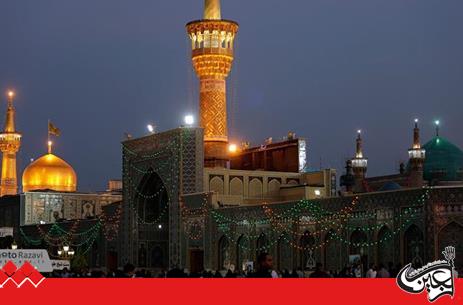With a focus on Imam Reza (A.S.), this book tries to form sympathy and rational proximity among Sunni and Shia Muslims. It also tries to stops hostile movements of the Wahhabi groups.
“Imam Reza from a Sunni Viewpoint” is the title of a book authored by Hujjat al-Islam wa al-Muslimin Muhammad Mohsen Moravveji Tabasi. This author has tried to offer a comprehensive and objective review from the view points and insights of Sunni Muslims about Imam Reza’s (A.S.) various aspects of character. Goals of Moravveji’s book include stopping vicious and divisive movements of Wahhabism between Shia and Sunni groups and also paving the way for more sympathy and rational proximity among these two sects with centrality of holy presence of Prophet Muhammad’s (S.A.W) offspring.
The present book has been offered to the interested people in seven parts including “life”, “character”, “tradition”, “leadership”, “heir apparentness”, “miraculous power”, and “pilgrimage”.
In the first part of this book which is on “life” of Imam Reza (A.S.), Imam’s (A.S.) dynasty, names and nicknames, parents, date and place of birth and martyrdom and also viewpoints of Sunni Muslims on martyrdom of Hazrat Reza (A.S.) and his children have been elaborated. Also, second part the title of which is “Character” contains some words of Imam Reza’s (A.S.) contemporary prominent figures including Sunni scholars about character of the Imam (A.S.) from the second up to the present century A.H.
“Tradition” is the rubric of the 3rd chapter of this book which has explored historic and unique welcome of people and Sunni scholars of Neyshabour from Imam Reza (A.S.). This part of the book also explores Hazrat Reza’s (A.S.) various traditions and it probes documents and evidences of the Silsilat al-Dhahab (Chain of Gold) tradition and viewpoints of Sunni Muslims about it. The 4th part examines special application of the term “leadership” in the words used by Sunni Muslims since 7th century A.H. up to now. It also examines various texts of Sunni Muslims emphasizing on Imam Reza’s (A.S.) leadership.
The 5th part of the book examines the imposed heir apparentness by Mamun and answers a series of important question about this story. Some of the raised questions on this topic include: Was this suggestion made by Mamun or Fazl Ibn Sahl? If it was made by Mamun, was he honest in this suggestion or he has followed other purposes? What was Imam Reza’s (A.S.) opinion on this issue?
“Miraculous power” is the name of 6th chapter of this book. This subpart of the book discusses insights of the Sunni Muslims about Hazrat Reza’s (A.S.) miraculous power and qualities from before his birthday until the time of his martyrdom. The last part, “pilgrimage”, talks about virtues of Razavi pilgrimage and emphases of Prophet Muhammad (S.A.W.), Imam Kazem (A.S.), Imam Reza (A.S.), Imam Javad (A.S.), and Imam Hadi (A.S.) on the importance of Razavi pilgrimage. This last part also discusses holy city of Mashhad and annals of construction of Razavi grave and visitations of great Sunni Muslims to illuminated Shrine since the 3rd century A.H. up to now.
This book has been translated, by Research Foundation of Astan Quds Razavi, into nine living languages including Arabic, Turkish, Tajik, English, French, Malay, and Urdu. This book has also been warmly welcomed in Pakistan and Arabic countries.
Friday 26 December 2025

